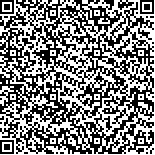下载中心
优秀审稿专家
优秀论文
相关链接
摘要

高分辨率影像的纹理信息可解决用光谱分类面临的“同物异谱”和“同谱异物”问题,更精确地分辨地物的细微变化,但将纹理作为主要信息进行植被分类的研究较少。本文以南京市钟山景区为例,利用IKONOS影像数据的纹理信息进行植被分类,并将结果与用光谱信息、植被指数信息的分类结果比较。共使用了4个灰度共生矩阵纹理量:CON(对比)、COR(相关)、HOM(同质)和MCON(改进的对比)分析各类植被的纹理表征设阈值分割;用3个植被指数:NDVI(归一化指数)、MSAVI(改进的土壤调节指数)和SAVI(土壤调节指数)(L取0.5和5)选择发现SAVI5最能区分。对纹理和指数信息均设各类型的阈值进行分割提取;基于光谱信息分别用最小距离监督分类和ISODATA非监督分类。研究中先进行数据恢复,再分别用三种信息将试验区植被分为6类:草地、竹林、常绿针叶林、常绿阔叶林、混交林和园地,最后将三种方法4个结果进行比较。精度评价的结论是:纹理信息分类的精度最高,植被指数次之,光谱信息中的非监督分类最低,纹理反映地物光谱及差异信息,可作为最佳方法用于植被分类。
Texture information can avoid the matter of 'same spectral from different materials' and 'same material with different spectral' which must be faced with when making classification with only spectral information of high resolution image,but few people use only texture information to distinguish different vegetation of high resolution image.This paper takes the Zhongshan scenic region of the eastern side of Nanjing City as the study area,and uses the satellite data of IKONOS to explore the methodology of discriminating the different types of vegetation.When texture information is employed,four texture statistics such as: CON(contrast),COR(correlation),HOM(homogeneity),and MCON(make-up contrast) are used.In order to test the result,Vegetation index information is used as well as spectral information,three VI such as: NDVI,MSAVI and SAVI(whose values of L equal to 0.5 and 5 respectively)are used to decide the best one who stands for some vegetation type,and SAVI5(value of L is 5)does well.A threshold is selected in texture and VI information to discriminate every type.From spectral information two methods are used: minimum distance supervised classification and ISODATA unsupervised classification.When processing the image,some steps must go: firstly,recovering the IKONOS image data;secondly,discriminating the vegetation types as: grassland,garden,conifers,mixed forest and bamboo,wide-leaf forest using the different methods,including the discrimination based on the pixel spectral data,the discrimination based on vegetation index,and the discrimination based on minor texture on the images.Through comparing all results the following conclusions have been drawn: texture information has the best classification accuracy,and the VI has better result,and the spectral information only has the worst,from which the result of unsupervised classification is the lowest.We can conclude that texture information can discriminate vegetation types and other material perfectly because it response to the spectral composition and properties of some material.

